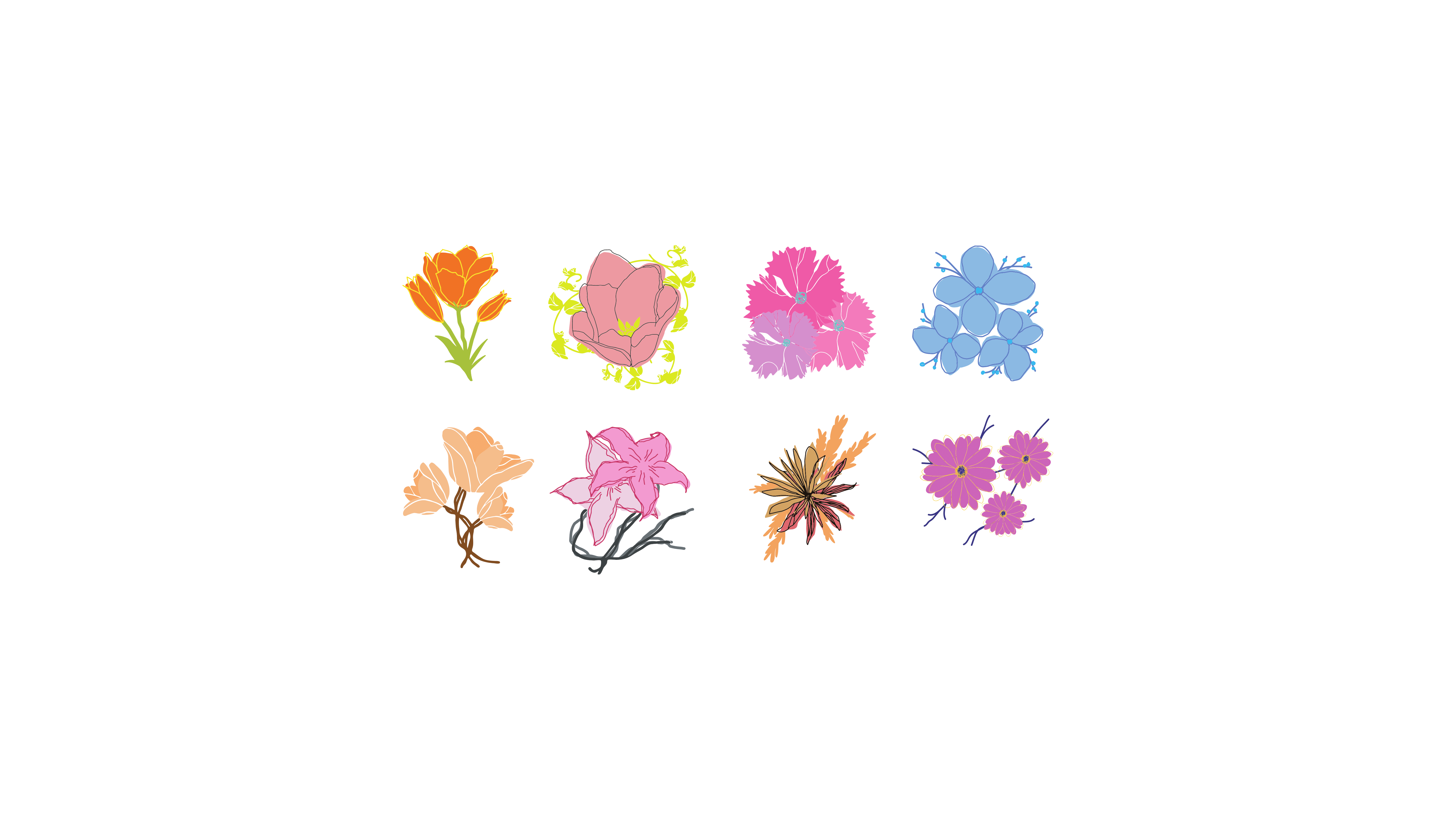what are vector graphics, what is vector graphics?
Vector graphics are a type of computer graphics that are created using mathematical equations to define geometric shapes. Unlike raster or bitmap graphics, which are composed of pixels, vector graphics are composed of points, lines, curves, and polygons. These elements are defined by their mathematical properties such as position, size, shape, and color.
The key characteristic of vector graphics is scalability. Since the shapes in vector graphics are defined mathematically, they can be scaled up or down without any loss of quality or resolution. This means that vector graphics can be resized to any extent without becoming pixelated or blurry, making them ideal for various applications such as logos, illustrations, typography, and technical drawings.
Vector graphics are created and edited using specialized software programs such as Adobe Illustrator, CorelDRAW, or Inkscape. These programs allow users to manipulate and modify the vector shapes by adjusting their properties, such as position, size, curvature, and color. Additionally, vector graphics can be easily edited, rearranged, or combined with other elements to create complex illustrations or designs.
One advantage of vector graphics is their relatively small file size compared to raster graphics. Since vector graphics only store the mathematical equations that define the shapes, they can be highly compressed and take up less storage space. This makes vector graphics more efficient for storing and transmitting over networks.
Overall, vector graphics offer flexibility, scalability, and sharpness, making them a preferred choice for various applications where precise and resizable graphics are needed.
Vector graphics are a type of computer graphics that use mathematical equations to define and represent images. Unlike raster graphics, which are composed of individual pixels, vector graphics are composed of lines, curves, and shapes that are defined by their mathematical properties.
In vector graphics, objects are created using geometric primitives such as points, lines, curves, and polygons. These objects can be resized, reshaped, and manipulated without losing any quality because the mathematical equations defining them can be recalculated and redrawn at any resolution.
One of the key advantages of vector graphics is scalability. Since the images are based on mathematical equations rather than a fixed grid of pixels, they can be scaled up or down in size without losing clarity or introducing pixelation. This makes vector graphics ideal for tasks such as logos, illustrations, typography, and any other design that requires flexibility and the ability to resize the artwork.
Additionally, vector graphics typically have smaller file sizes compared to raster graphics, which makes them more suitable for web-based applications and reduces storage requirements.
Popular file formats for vector graphics include SVG (Scalable Vector Graphics), AI (Adobe Illustrator), EPS (Encapsulated PostScript), and PDF (Portable Document Format). These formats can be edited and manipulated using vector graphics software such as Adobe Illustrator, CorelDRAW, Inkscape, and Affinity Designer.
Scalable Vector Graphics (SVG) is a widely used file format for vector graphics. It is a standard XML-based format developed by the World Wide Web Consortium (W3C) and is supported by most modern web browsers.
SVG files are composed of XML code that describes the shapes, lines, curves, colors, and other graphical elements in a two-dimensional space. The key feature of SVG is its scalability — the graphics can be scaled up or down in size without any loss of quality or sharpness. This makes SVG ideal for web design, where responsiveness and adaptability to different screen sizes are crucial.
SVG supports a wide range of shapes and elements, including paths, lines, polygons, text, gradients, and more. It also allows for interactivity and animation using scripting languages like JavaScript. With SVG, you can create complex and visually appealing graphics, icons, logos, illustrations, and even interactive charts or maps.
One of the advantages of SVG is its compatibility with various software applications and platforms. SVG files can be created, edited, and saved using vector graphics software such as Adobe Illustrator, Inkscape, or CorelDRAW. They can be embedded directly into HTML documents or referenced as external files, allowing for easy integration into websites and applications.
SVG is also compatible with CSS (Cascading Style Sheets), which means you can apply styles and effects to the elements within an SVG file, making it even more versatile for design and customization.
Overall, SVG is a powerful and flexible file format for creating scalable vector graphics that can be used for a wide range of purposes, especially in web design and interactive graphics.
vector graphics software
There are several vector graphics software available that allow you to create, edit, and manipulate vector-based artwork. Here are some popular vector graphics software options:
1. Adobe Illustrator: Adobe Illustrator is one of the most widely used vector graphics software. It offers a comprehensive set of tools for creating and editing vector-based artwork, illustrations, logos, typography, and more. It also provides advanced features such as gradients, layers, effects, and precise control over paths and shapes.
2. CorelDRAW: CorelDRAW is a popular vector graphics suite that provides powerful tools for graphic design, illustration, and layout. It offers a range of features including precise drawing tools, node editing, vector effects, and support for advanced typography. CorelDRAW is known for its user-friendly interface and is widely used in various industries.
3. Inkscape: Inkscape is a free and open-source vector graphics editor available for Windows, macOS, and Linux. It offers a wide range of tools for creating and editing vector-based artwork, including shapes, paths, text, gradients, and more. Inkscape supports SVG as its primary file format and provides a user-friendly interface for both beginners and advanced users.
4. Affinity Designer: Affinity Designer is a professional-grade vector graphics software available for Windows, macOS, and iPad. It offers a wide range of tools and features for creating and editing vector-based illustrations, designs, and artwork. Affinity Designer provides a smooth and intuitive workflow along with support for advanced features like non-destructive editing and pixel-perfect control.
5. Sketch: Sketch is a popular vector graphics software specifically designed for user interface (UI) and user experience (UX) design. It offers a range of features tailored for creating digital designs, wireframes, and interactive prototypes. Sketch provides tools for vector editing, symbol libraries, artboards, and collaboration features for design teams.
These are just a few examples of vector graphics software available in the market. Each software has its own strengths and features, so it’s recommended to try out different options and choose the one that best fits your needs and workflow.
vector graphics free
If you’re looking for free vector graphics software, here are some options you can consider:
1. Inkscape: As mentioned earlier, Inkscape is a free and open-source vector graphics editor available for Windows, macOS, and Linux. It provides a wide range of features and tools for creating and editing vector-based artwork.
2. SVG-Edit: SVG-Edit is a web-based vector graphics editor that runs directly in your web browser. It’s an open-source tool that allows you to create and modify SVG files online without the need for any installation or downloads.
3. Gravit Designer: Gravit Designer offers a free version of its vector graphics software. It is available for Windows, macOS, Linux, and ChromeOS. The free version provides a comprehensive set of tools for creating vector-based designs, illustrations, and icons.
4. Vectr: Vectr is a free vector graphics editor that is available as both a web-based tool and a downloadable desktop application for Windows, macOS, Linux, and ChromeOS. It offers a user-friendly interface and collaborative features, making it suitable for beginners and small design projects.
5. Boxy SVG: Boxy SVG is a free vector graphics editor available as a web-based tool and as a Chrome extension. It provides a clean and intuitive interface along with essential vector editing features.
These free vector graphics software options should give you a good starting point for creating and editing vector-based artwork without any cost. Remember to check the specific features and system requirements of each software to ensure they meet your requirements.





